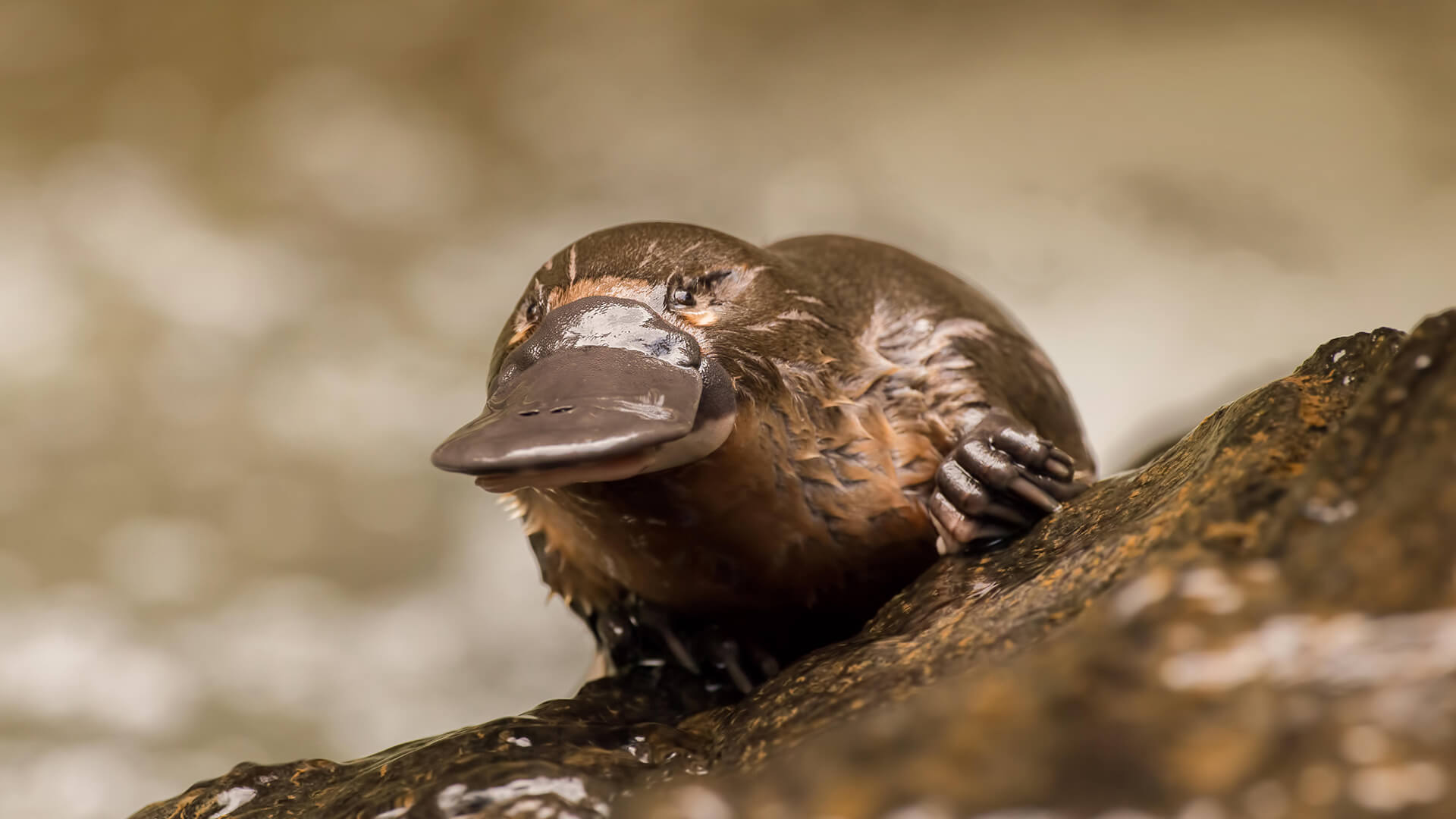The platypus is a fascinating and unique mammal native to eastern Australia, including Tasmania. Known for its distinctive appearance and unusual characteristics, the platypus is one of only a few egg-laying mammals, or monotremes, in the world. With its duck-like bill, beaver-like tail, and otter-like feet, this creature is a curious blend of different animal traits, making it one of nature’s most intriguing wonders.
Habitat and Distribution
Platypuses are found in freshwater habitats such as rivers, lakes, and streams in eastern Australia and Tasmania. They are adept swimmers, spending much of their time in the water, where they hunt for food. These environments provide them with abundant sources of insects, larvae, and small aquatic animals, which form the bulk of their diet. Platypuses use their sensitive bills to detect prey, employing electroreception to sense the electric fields generated by muscle contractions in their prey.
Physical Characteristics and Behavior
One of the most striking features of the platypus is its bill, which resembles that of a duck but is much more sensitive. The bill is covered with thousands of receptors that can detect minute electrical signals, helping the platypus locate prey even in murky water. Their webbed feet are another notable feature, aiding in their swimming efficiency. When on land, the webbing retracts, revealing sharp claws that are useful for digging burrows.
Platypuses are generally solitary creatures, with each individual maintaining its own territory. They are most active during dawn and dusk, engaging in activities like foraging and grooming. Platypuses create burrows along the banks of water bodies, where they sleep and raise their young. These burrows can be quite extensive, sometimes stretching up to 30 meters in length.
Reproduction and Lifecycle
Platypuses are unique among mammals in that they lay eggs. The breeding season typically occurs in the late winter to spring. After mating, the female platypus will lay one to three eggs, which she incubates by curling around them. The incubation period lasts about ten days, after which the young hatch. Newborn platypuses are extremely vulnerable, being blind and hairless at birth. They rely entirely on their mother’s milk, which is secreted through specialized mammary glands and absorbed through the skin, as platypuses lack nipples.
Conservation Status and Threats
While not currently listed as endangered, the platypus faces several threats that could impact its populations. Habitat destruction, water pollution, and climate change are significant concerns. Human activities, such as dam construction and land clearing, can disrupt their natural habitats, affecting their ability to find food and shelter. Additionally, climate change can alter water temperatures and availability, further threatening their survival.
Conservation efforts are crucial to ensure the continued survival of this unique species. Protecting their natural habitats, regulating water quality, and raising awareness about the platypus’s ecological role are all vital steps in safeguarding their future.
Conclusion
The platypus stands out as one of the most extraordinary creatures in the animal kingdom. Its combination of mammalian and reptilian traits, along with its specialized adaptations, make it a fascinating subject of study and admiration. As we continue to learn more about this remarkable animal, it’s essential to recognize the importance of conservation efforts in preserving its unique place in the world. The platypus is not just a marvel of evolution; it is a symbol of the diversity and wonder of nature, reminding us of the countless mysteries that still await discovery in our natural world.







What do you think?
Show comments / Leave a comment